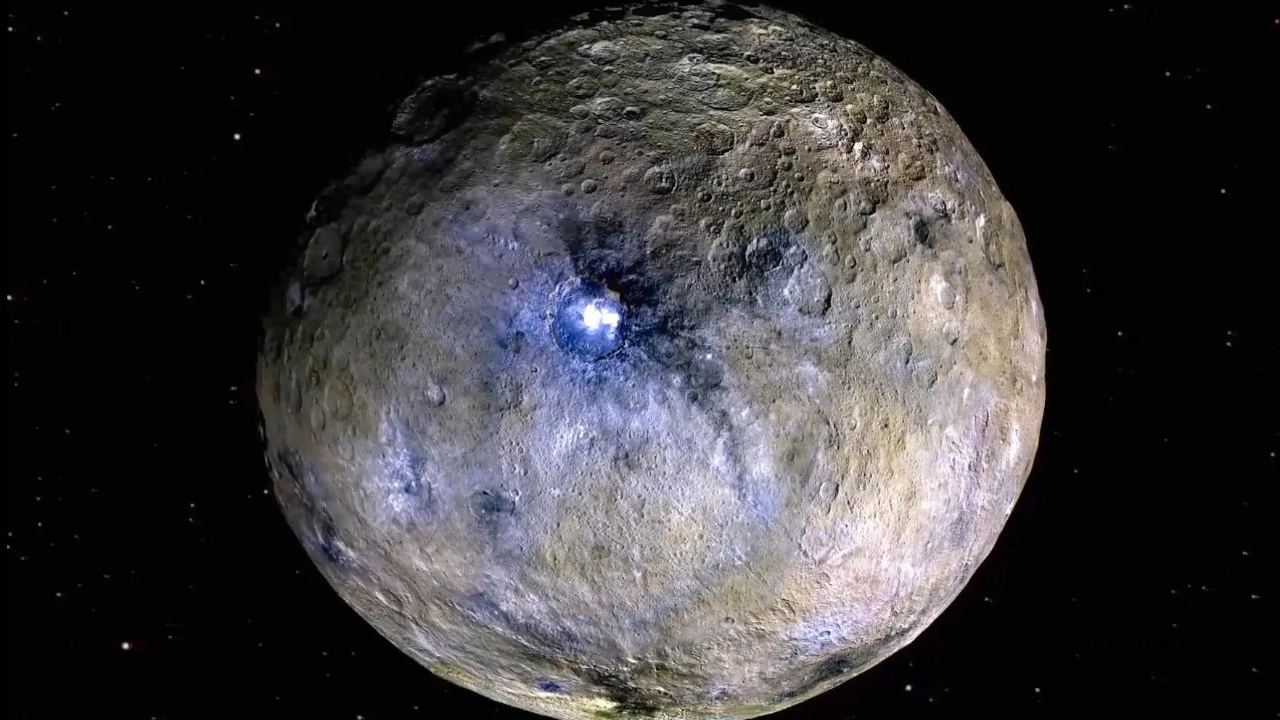Ceres, the largest object in the asteroid belt between Mars and Jupiter, has long been cast as a frozen relic of the early solar system — quiet, airless, and lifeless. But new research suggests that billions of years ago, this dwarf planet may have harbored the right ingredients to support simple microbial life.
That’s according to a new study using data from NASA’s Dawn spacecraft that opens the door to reevaluating the habitability of similarly small, icy bodies in the solar system, scientists say. If Ceres ever was habitable, its window to potentially sustain life likely closed billions of years ago. Today, its surface is bitterly cold, with most of its underground water frozen into a thick shell of ice, with some remaining as a salty brine trapped below.
Yet data gathered by Dawn revealed hints of a more dynamic, complex past. Bright, reflective patches on the surface turned out to be salt deposits left by briny liquid that once seeped upward. Organic molecules, discovered in Ceres’ soil, suggest the ingredients for life were also present. Until now, though, one piece was missing: a source of energy to sustain life.
A world gone cold
Ceres is small by planetary standards, measuring just 600 miles (960 kilometers) across, or about one-third the width of Earth’s moon. Unlike icy moons such as Jupiter’s Europa and Saturn’s Enceladus, which are kept warm by the gravitational tug of giant planets, Ceres has no external energy source to prolong its habitability.
The new study fills that gap, scientists say. Using computer models, researchers simulated Ceres’ interior over billions of years and found that, between 2.5 and 4 billion years ago, radioactive decay in the dwarf planet’s rocky core could have generated enough heat to drive hydrothermal activity.
Circulating water within the planet would have reacted with hot, altered rock, carrying gases and minerals into a global ocean, creating chemical “food” for microbes — much like the hydrothermal vents that teem with life on Earth’s sunless seafloor, according to the new study.
“On Earth, when hot water from deep underground mixes with the ocean, the result is often a buffet for microbes — a feast of chemical energy,” Samuel Courville, a researcher at Arizona State University who led the new study, said in a statement. “So it could have big implications if we could determine whether Ceres’ ocean had an influx of hydrothermal fluid in the past.”
Even if life never took hold on Ceres, the discovery could help broaden the range of environments that could potentially be habitable. Unlike many ocean worlds orbiting giant planets, Ceres isn’t powered by tidal heating, making it a simpler and more revealing case study of how small, icy bodies evolve. Because so many objects in the solar system are similar in size, researchers suggest they could have represented a common type of habitable environment in the solar system’s early days.
The study also points to other candidates: icy worlds roughly the size of Ceres, including some moons of Uranus and Saturn, may have followed comparable evolutionary paths and hosted temporary oceans capable of supporting life before cooling into the frozen landscapes we see today.
A study of potential past habitability on Ceres was published on Aug. 20 in the journal Science Advances.
